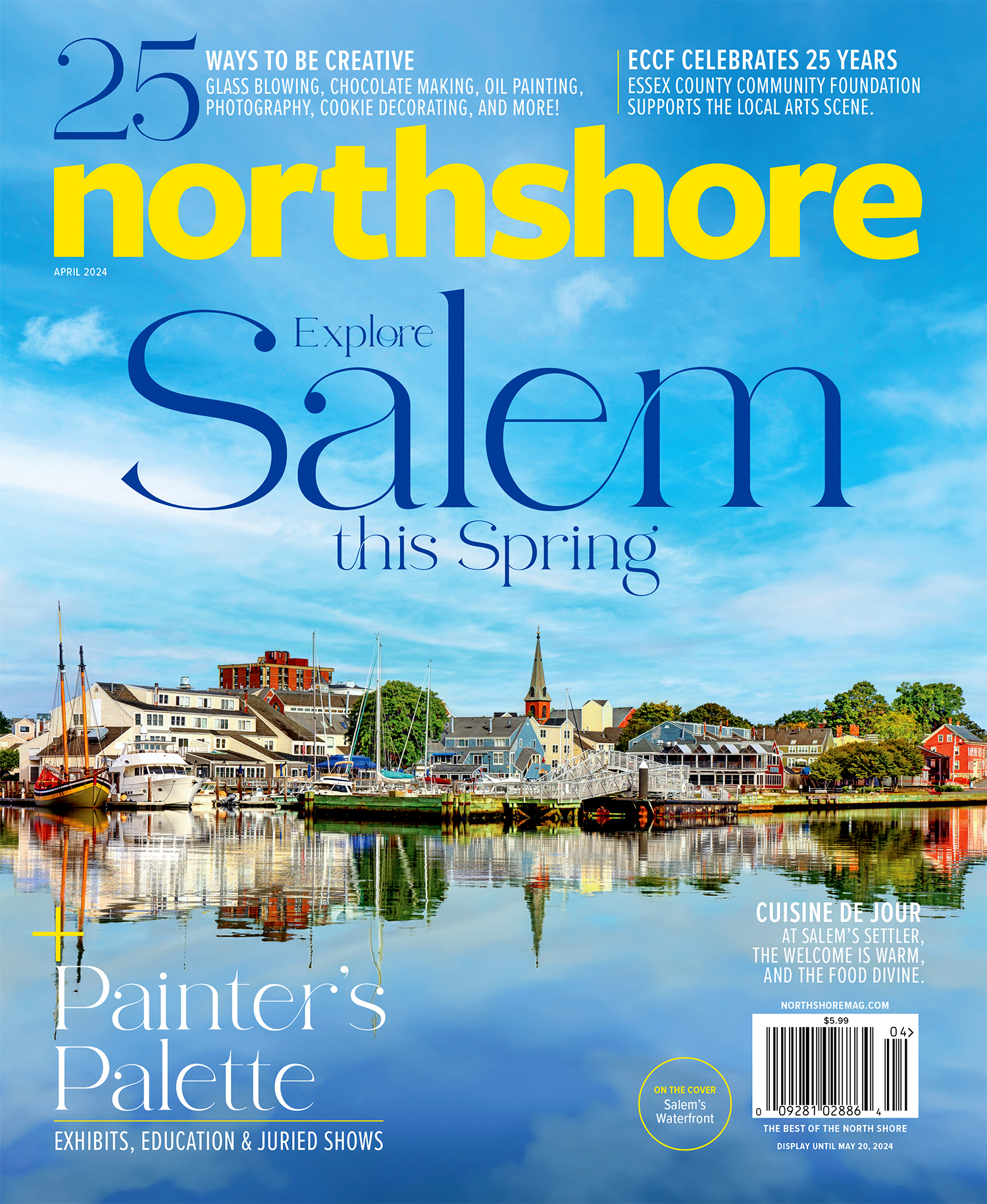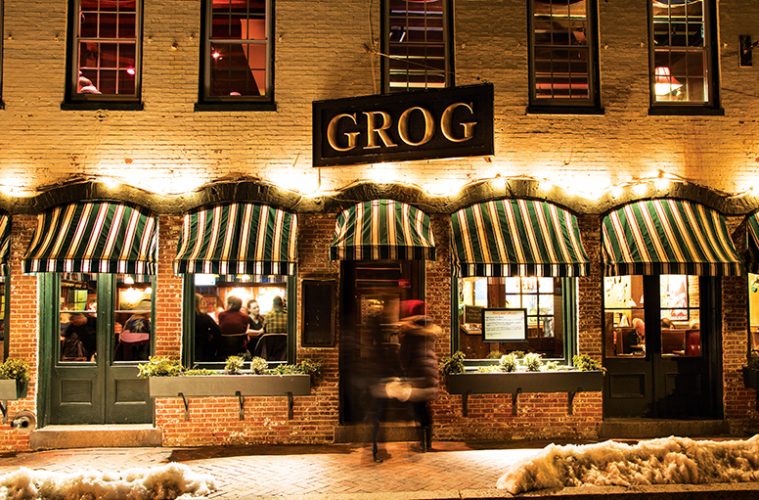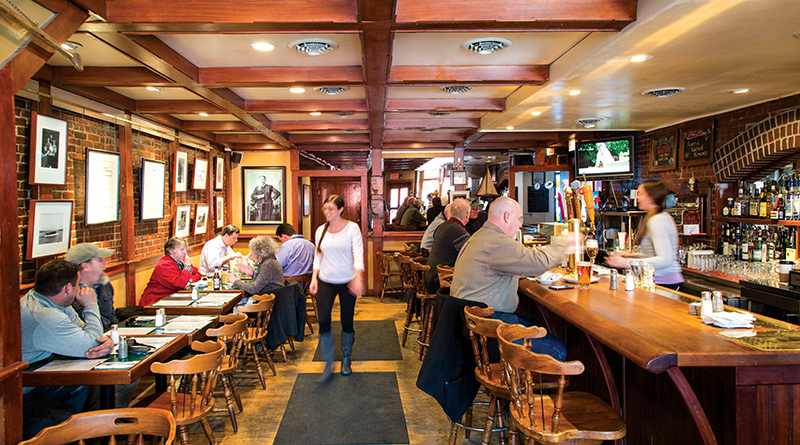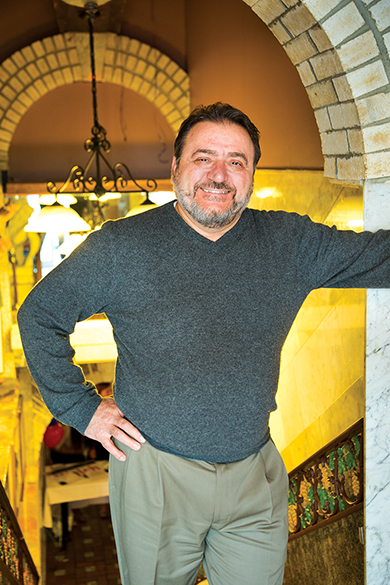 Halibut Point’s pub interior is loaded with memorabilia
Halibut Point’s pub interior is loaded with memorabilia
“You should have seen all us old guys trying to figure it out,” says Flavin, who doesn’t even have a cell phone.
For a certain type of North Shore haunt, change comes slowly—or not at all. Regulars are resistant to new de?cor or menu items, and maintaining that balance can spell decades of success or speedy failure. Halibut Point’s menu has remained virtually unchanged for decades—from Flavin’s original recipe for clam chowder to the lack of fried food— although that’s not for lack of trying. A few years back, Flavin’s daughter, Mercedes, came to work at the restaurant with her husband, Michelin-starred chef Paolo Laboa, and tried to modify the menu.
“It was anarchy,” recalls Flavin. “I got phone calls, I got letters…. People were so used to coming in, they didn’t even look at the menu, they just ordered.” After three or four months, he says, things weren’t going well, so they changed everything back—even the bread.
Bill Nichelmann understands the weight of tradition all too well. He and his wife, Nicole, now run The Grog, the legendary pub in Newburyport opened by his father-in-law, Richard Simkins, in 1970. With 400 seats—more than four times the number at Halibut Point, Nichelmann has a bit more leeway with the menu, but he still wants to stay true to his father-in-law’s vision and the vibe of the space, which has been a tavern nearly continuously since just after the Civil War.
The low ceilings, dark paneled walls, and wood-burning fireplace all speak to another century, enlivened by original Art Deco posters advertising bitters and 1950s movies that hang alongside striking plaster-cast hand-painted fish Nichelmann bought from “a random hippie” years ago. The clientele is equally eclectic—local families with small children, young people, senior citizens, and tourists pack the booths, enjoying a varied menu ranging from classic burgers and chowder to standout crab cakes and a sweet potato burrito that has been on offer for more than 15 years. Blue-collar workers, lawyers, neighbors, and employees from area restaurants all rub shoulders at the bar, taking their regular seats every afternoon at 3 p.m. to meet up with friends. The famed live music scene attracts a host of artists, including legends from across the country who have been playing at Parker Wheeler’s Blues Party every Sunday night for 24 years.
Over the brutal winter, Nichelmann remained open daily, so as not to disappoint neighbors who arrived on skis, snowshoes, and fat-tired bikes for a little camaraderie and some hot food.
Tweaking a menu with such a long history and maintaining consistent high-quality food is a balancing act. The Grog has always sold casual American food, with an emphasis on fresh seafood and a few quirks, like the Mexican section with its terrific fish tacos—a hold-over from when the upstairs space was a Mexican restaurant. The menu changes every six months, but not much, and the top-notch chefs show off their skills with specials and an elegant catering menu.
“We want to generate excitement and not become stagnant but preserve the old feel,” Nichelmann says. That isn’t always easy when it comes to the de?cor—tables and chairs break, and none of the drawers work on the host stand, but you can’t just replace them with new and still maintain that scruffy charm.
“I am constantly repairing and replacing things, but we can’t use brand-new wood,” Nichelmann says. “It’s difficult to replace things and still have the feeling people expect at The Grog.”
|


 Halibut Point’s pub interior is loaded with memorabilia
Halibut Point’s pub interior is loaded with memorabilia Lucia owner Donato Frattaroli
Lucia owner Donato Frattaroli